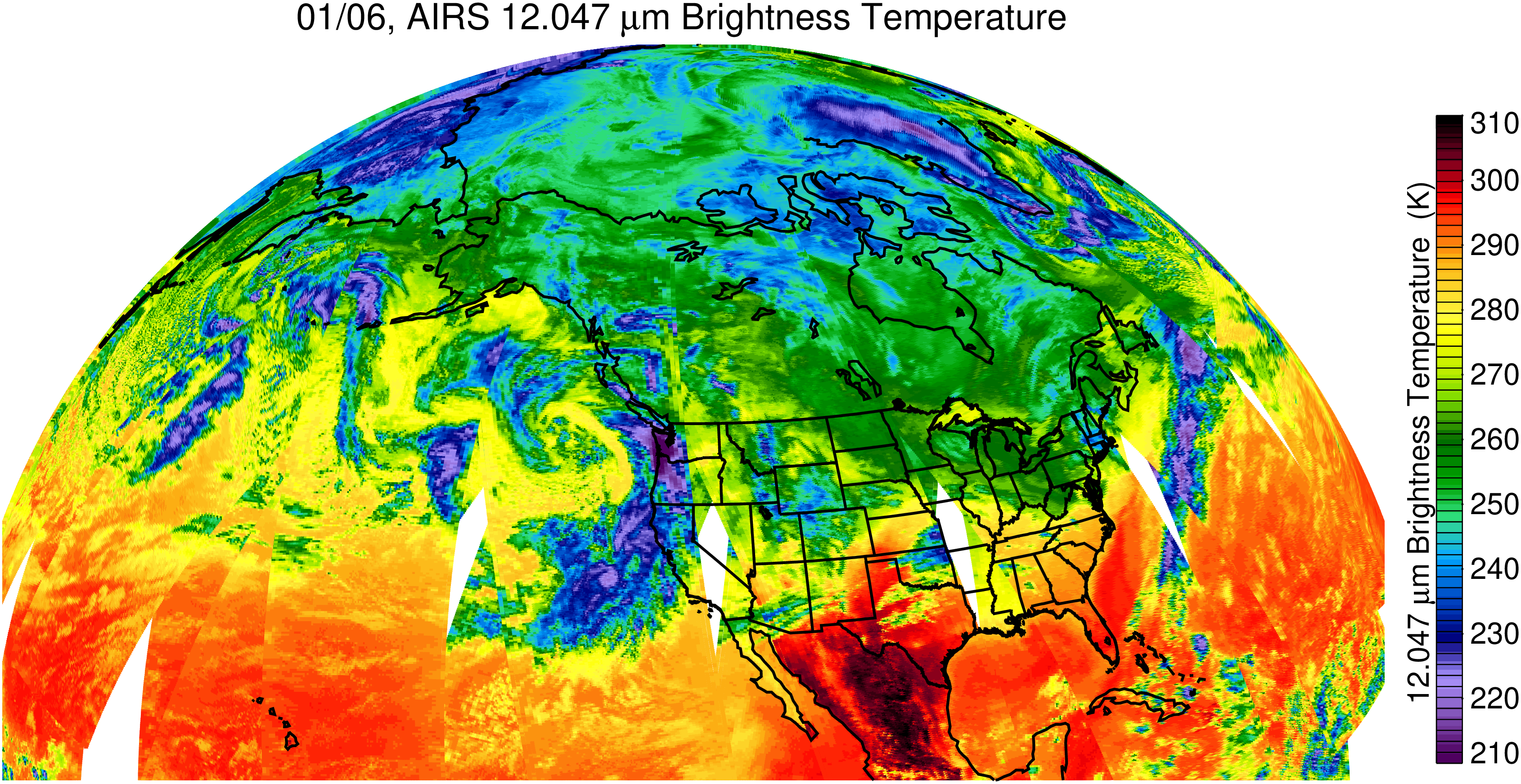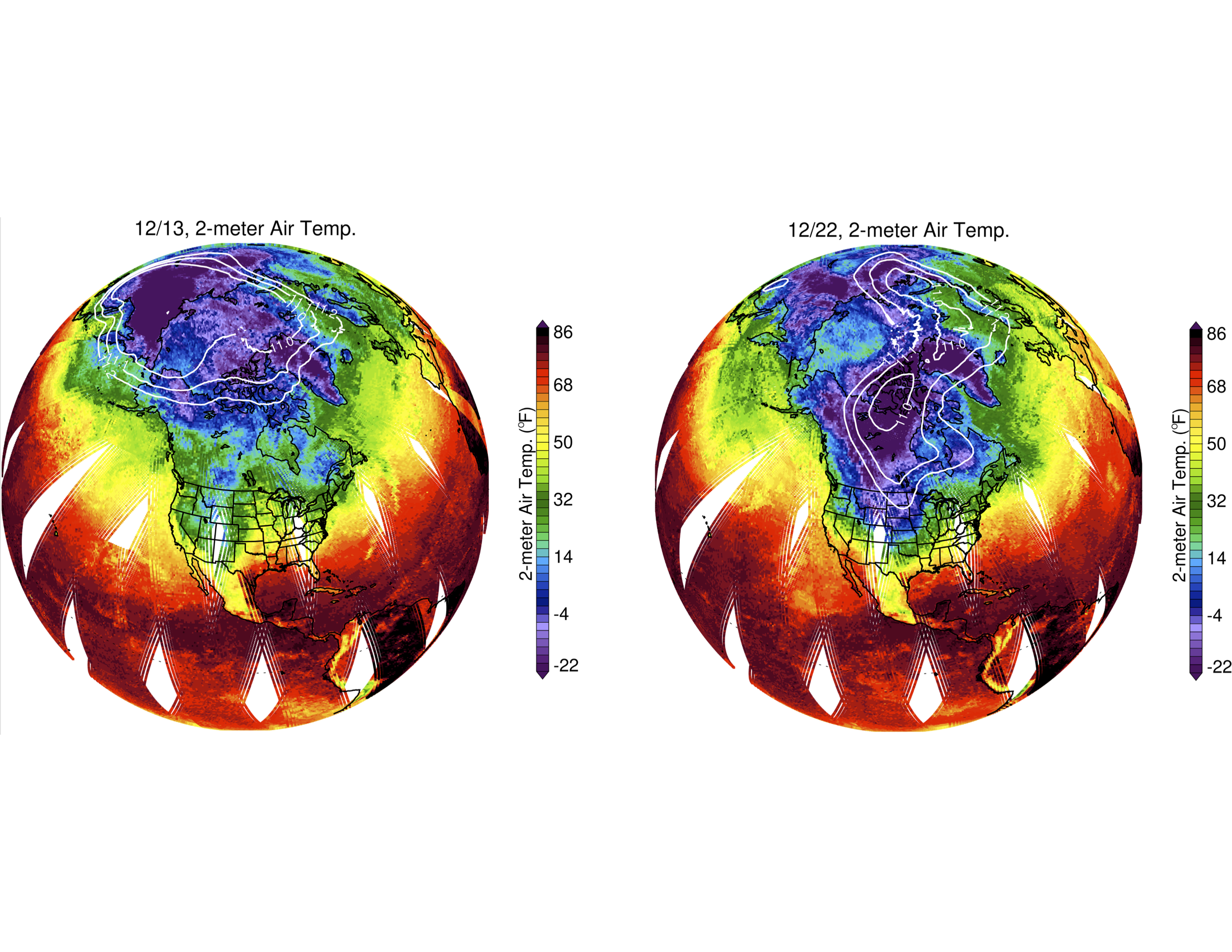News | February 28, 2011
Your paper, three questions: Vertical Moist Thermodynamic Structure of the Madden-Julian Oscillation in Atmospheric Infrared Sounder Retrievals: An Update and a Comparison to ECMWF Interim Re-Analysis

By Sharon Ray, NASA Jet Propulsion Laboratory
Published in Monthly Weather Review, December 2010
The Madden-Julian Oscillation, or MJO, is a large-scale eastward-moving atmospheric wave that stretches almost halfway around the world. In one phase of this equatorial wave, air slowly rises, triggering showers and thunderstorms. In the other phase, air slowly sinks, inhibiting clouds and rainfall.
In a nutshell, what is your paper about?
The paper compares data from the spaceborne AIRS instrument to the ECMWF Interim Re-Analysis (ERA-Interim) as it examines the large-scale vertical temperature and moisture structure of the MJO. The AIRS data used in the study consisted of a 7-year data record of atmospheric specific humidity and temperature profiles, processed to Version 5.
What did you find out?
Our work shows that the signature of the large-scale vertical moist thermodynamic structure of the MJO, first identified in our earlier work, is robust and is not dependent on AIRS data record lengths, AIRS data retrieval versions, and MJO analysis methods. The work also indicates that significant differences still exist in the MJO vertical structure between AIRS and ERA-Interim. However, the agreement between AIRS and ERA-Interim is much better than that between AIRS and NCEP/NCAR reanalysis. This characterization of the vertical moist thermodynamic structure of the MJO by AIRS offers a useful observation-based metric for general circulation model diagnostics.
What aspect of your research might the general public find interesting?
With the new generation of satellite instruments such as AIRS, we are able to measure atmospheric properties in a three-dimensional way with unprecedented detail. Such a rich database helps the scientific community better understand, simulate and predict the MJO, which influences a wide range of weather and climate phenomena. This dataset will also help the scientific community to improve the global models that are used to predict future climate change.
About Baijun Tian
Baijun Tian is a research scientist at the Jet Propulsion Laboratory in Pasadena, California and a visiting assistant researcher at the Joint Institute for Regional Earth System Science and Engineering in University of California, Los Angeles. Baijun has a doctorate degree in Oceanography from Scripps Institution of Oceanography and bachelor and master degrees in Meteorology from Peking University.
Baijun's scientific interests focus on the Madden-Julian Oscillation and its global chemical impact. You can view his web page at:
About The Paper
Abstract
The large-scale vertical moist thermodynamic structure of the Madden-Julian oscillation (MJO) was documented using the first 2.5 yr (2002-2005) of version 4 atmospheric specific humidity and temperature profiles from the Atmospheric Infrared Sounder (AIRS). In this study, this issue is further examined using currently available 7-year version 5 AIRS data (2002-2009) to test its dependence on the AIRS data record lengths, AIRS retrieval versions, and MJO event selection and compositing methods employed. The results indicate a strong consistency of the large-scale vertical moist thermodynamic structure of the MJO between different AIRS data record lengths (2.5 vs 7 year), different AIRS retrieval versions (4 vs 5), and different MJO analysis methods [the extended empirical orthogonal function (EEOF) method vs the multivariate empirical orthogonal function (MEOF) method].
The large-scale vertical moist thermodynamic structures of the MJO between the AIRS retrievals and the ECMWF Interim Re-Analysis (ERA-Interim) products are also compared. The results indicate a much better agreement of the MJO vertical structure between AIRS and ERA-Interim than with the NCEP-NCAR reanalysis, although a significant difference exists in the magnitude of moisture anomalies between ERA-Interim and AIRS. This characterization of the vertical moist thermodynamic structure of the MJO by AIRS and ERA-Interim offers a useful observation-based metric for general circulation model diagnostics.
Citation
Tian, Baijun, Duane E. Waliser, Eric J. Fetzer, Yuk L. Yung, 2010: Vertical Moist Thermodynamic Structure of the Madden-Julian Oscillation in Atmospheric Infrared Sounder Retrievals: An Update and a Comparison to ECMWF Interim Re-Analysis. Mon. Wea. Rev., 138, 4576-4582.
doi: 10.1175/2010MWR3486.1







